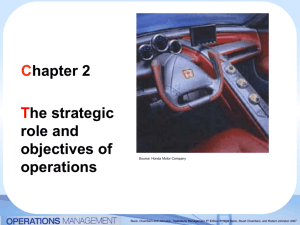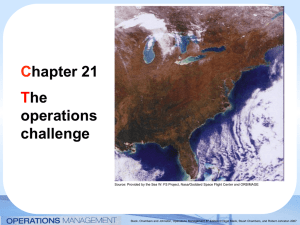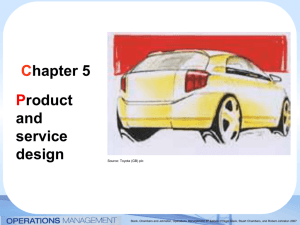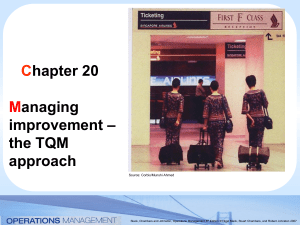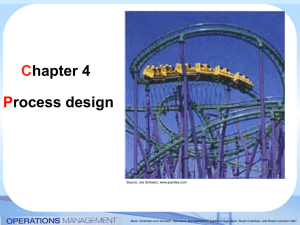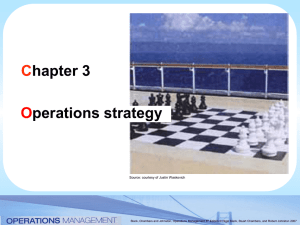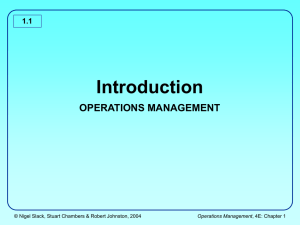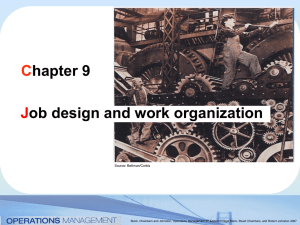from concept to specification
advertisement
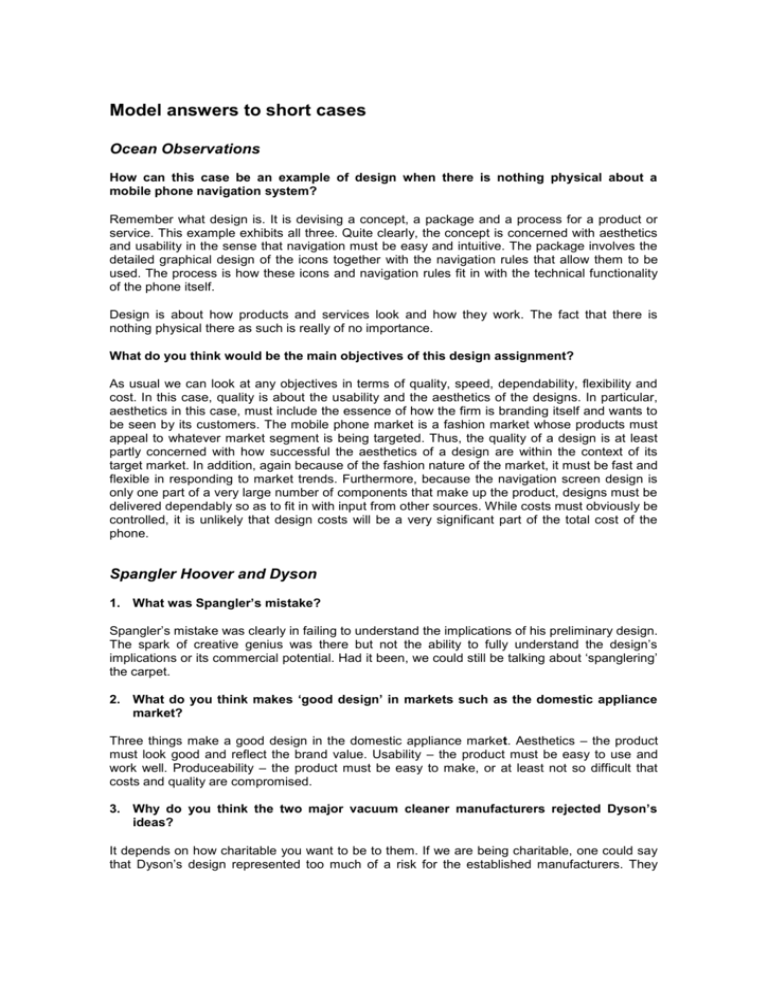
Model answers to short cases Ocean Observations How can this case be an example of design when there is nothing physical about a mobile phone navigation system? Remember what design is. It is devising a concept, a package and a process for a product or service. This example exhibits all three. Quite clearly, the concept is concerned with aesthetics and usability in the sense that navigation must be easy and intuitive. The package involves the detailed graphical design of the icons together with the navigation rules that allow them to be used. The process is how these icons and navigation rules fit in with the technical functionality of the phone itself. Design is about how products and services look and how they work. The fact that there is nothing physical there as such is really of no importance. What do you think would be the main objectives of this design assignment? As usual we can look at any objectives in terms of quality, speed, dependability, flexibility and cost. In this case, quality is about the usability and the aesthetics of the designs. In particular, aesthetics in this case, must include the essence of how the firm is branding itself and wants to be seen by its customers. The mobile phone market is a fashion market whose products must appeal to whatever market segment is being targeted. Thus, the quality of a design is at least partly concerned with how successful the aesthetics of a design are within the context of its target market. In addition, again because of the fashion nature of the market, it must be fast and flexible in responding to market trends. Furthermore, because the navigation screen design is only one part of a very large number of components that make up the product, designs must be delivered dependably so as to fit in with input from other sources. While costs must obviously be controlled, it is unlikely that design costs will be a very significant part of the total cost of the phone. Spangler Hoover and Dyson 1. What was Spangler’s mistake? Spangler’s mistake was clearly in failing to understand the implications of his preliminary design. The spark of creative genius was there but not the ability to fully understand the design’s implications or its commercial potential. Had it been, we could still be talking about ‘spanglering’ the carpet. 2. What do you think makes ‘good design’ in markets such as the domestic appliance market? Three things make a good design in the domestic appliance market. Aesthetics – the product must look good and reflect the brand value. Usability – the product must be easy to use and work well. Produceability – the product must be easy to make, or at least not so difficult that costs and quality are compromised. 3. Why do you think the two major vacuum cleaner manufacturers rejected Dyson’s ideas? It depends on how charitable you want to be to them. If we are being charitable, one could say that Dyson’s design represented too much of a risk for the established manufacturers. They Nigel Slack, Stuart Chambers & Robert Johnston, Operations Management, fifth edition, Instructor’s Manual would be threatening their own existing products and forgoing the revenue they gained from selling the cleaner bags, for a design, which had not been proved in the marketplace. A less charitable view would be that they were simply conservative, had little imagination, and did not understand the need for innovation. Nor did they understand how a better product, alternatively positioned in the market to stress design and performance, could undermine their existing market position. 4. How did design make Dyson a success? Dyson's design is succeeded by systematically challenging the assumptions behind current product orthodoxy. Dyson’s design brought together concepts that were not totally original but integrated them and used them in a new context. The ability to do that successfully (and the perseverance) is often far more valuable than pure creative originality. The process of design is essentially about systematically bringing together ideas and subjecting them to a critical process. Customers design their own services What do you think are the advantages and disadvantages of involving customers this closely in the design process? The advantages are that customer feedback is real and direct. In many ways, customers know better than anyone what they need and how effective current services are. The disadvantages involve the time taken, the fact that the customers chosen may not be typical and the general principle that customers have their own agenda, which is different from the company’s. The company needs to keep its customers happy while being able to make a profit. Customers, on the other hand, want as much as they can get in return for their effort and money. Therefore, their suggestions may not be feasible as far as the company is concerned. How could providers of education products adopt this idea? Well, one is faced with the same dilemma. In principle, the customers for education products, such as university degrees, want a good and appropriate education for the time and money they invest in being education. The university or education provider needs to satisfy its customers while still maintaining appropriate standards of assessment and while making a profit (or in a not-profit institution, keeping within its budget). While involving users has significant advantages, there is a limit to how far their wishes can be achieved fairly and economically. 2 © Nigel Slack, Stuart Chambers & Robert Johnston 2007 Nigel Slack, Stuart Chambers & Robert Johnston, Operations Management, fifth edition, Instructor’s Manual Customizing for kids How does the concept of modularization apply to this example? Each shot from the camera is, in effect, a module or a part of the total programme. By standardizing these modules to emphasize standard shots, it was possible to reuse some modules, even though they were shot in the ‘wrong’ language. What do you think are the similarities between what this company did and how motor vehicle manufacturers design their products? Essentially, modularization is exactly the same for both industries. In automobile manufacturing it involves standardizing parts so that they can be used in several different products. In programme making it involves standardizing shots so that they can be used (with some modification) in different products (that is, the same programme, but in a different language). 3 © Nigel Slack, Stuart Chambers & Robert Johnston 2007 Nigel Slack, Stuart Chambers & Robert Johnston, Operations Management, fifth edition, Instructor’s Manual 4 © Nigel Slack, Stuart Chambers & Robert Johnston 2007

